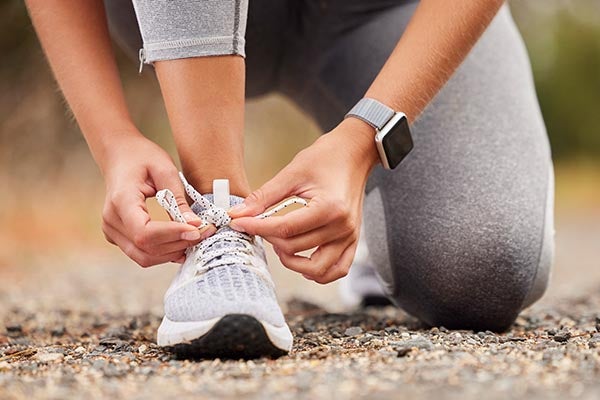Orthopedic tips for a safe and strong Heart Walk
October 28, 2025Categories: Blog Posts
Tags: Cardiology
 The American Heart Association’s Philadelphia Heart Walk on Nov. 1 can be an emotionally charged day for attendees, whether they’re strolling in memory of a loved one or in celebration of their own survival. But while the event carries deep emotional meaning, participants shouldn’t overlook the physical side of the journey, especially when it comes to keeping their feet and ankles healthy throughout the 5K.
The American Heart Association’s Philadelphia Heart Walk on Nov. 1 can be an emotionally charged day for attendees, whether they’re strolling in memory of a loved one or in celebration of their own survival. But while the event carries deep emotional meaning, participants shouldn’t overlook the physical side of the journey, especially when it comes to keeping their feet and ankles healthy throughout the 5K.
Ahead of the Heart Walk, orthopedic surgeon Eric Gokcen, MD, of Trinity Health Mid-Atlantic Medical Group’s Orthopedics Langhorne, shares guidance on proper footwear, stretching and signs to look out for along the route of a sustained injury.
According to Dr. Gokcen, the most important thing someone can do before embarking on a 5K—or even a daily walking/running regime—is invest in a good sneaker. Over the years, he has seen many patients’ foot ailments dissipate after they started wearing the right shoes.
“The best kind of shoe is a supportive shoe, one that doesn’t have a lot of flexibility. It’s more rigid. A lot of people think that a really flexible shoe is going to be the most comfortable, but if you have foot problems, that actually puts more stress on your foot because it causes your foot to bend and puts a lot of torque.”
Dr. Gokcen recommends lace-up sneakers over slip-on, as the foot is more likely to slide around in the latter, resulting in pain and blisters.
Once walkers have their rigid-soled sneakers in hand, it’s important to stretch and prepare the body—especially the lower extremities—for the trek. Though events like the Heart Walk aren’t terribly lengthy (participants can choose a 3.1- or 1-mile route), these distances can result in injury if a less active individual doesn’t work their way up to it.
“The best thing for anybody that’s doing a prolonged walk is to always prep for it. I see so many people that get overuse injuries because they just show up for something rather than trying to get out and walk ahead of time and gradually get up that distance,” says Dr. Gokcen. “And if you stretch out your Achilles ahead of time, that decreases your chances of getting an overuse injury.”
Studies show that walking for 30 minutes three times a week is beneficial to the body, even slowing down the progression of knee arthritis. For those who can walk for 45 minutes five times a week, they’ll see even better results.
If a participant is in the middle of the Heart Walk route and begins experiencing foot and/or ankle pain, they should take a moment to assess the pain. If it’s gradual and settles down after a brief pause and some stretching, Dr. Gokcen says they’re most likely fine to continue. However, if it’s acute and worsens with time, it’s a good idea to stop and seek medical attention.
Visit our Orthopedic Care site for more information on orthopedic services and to make an appointment.
